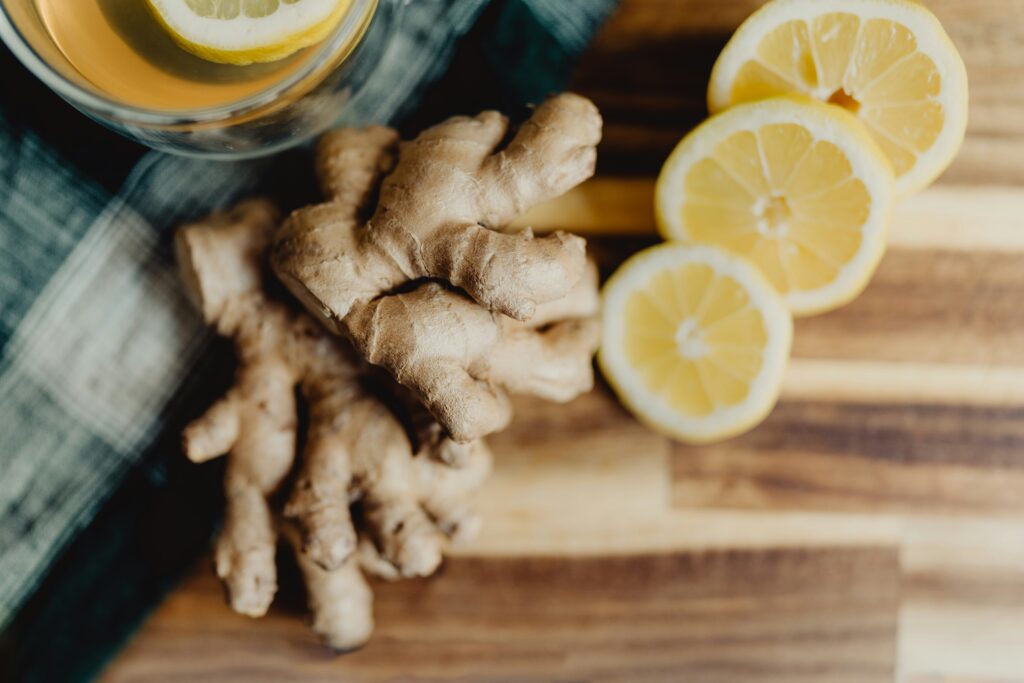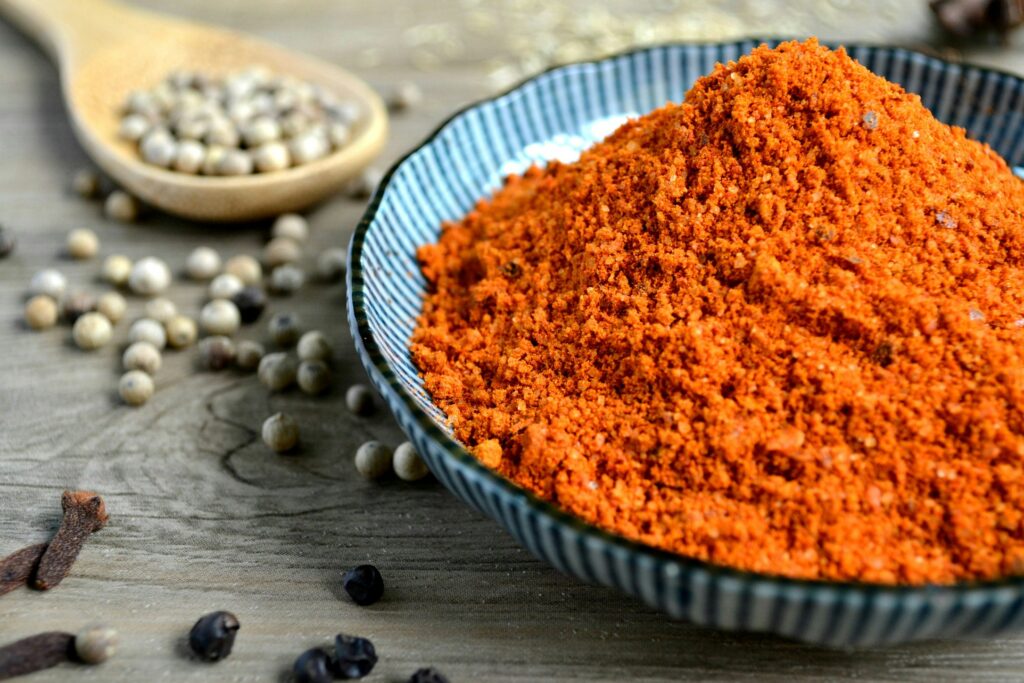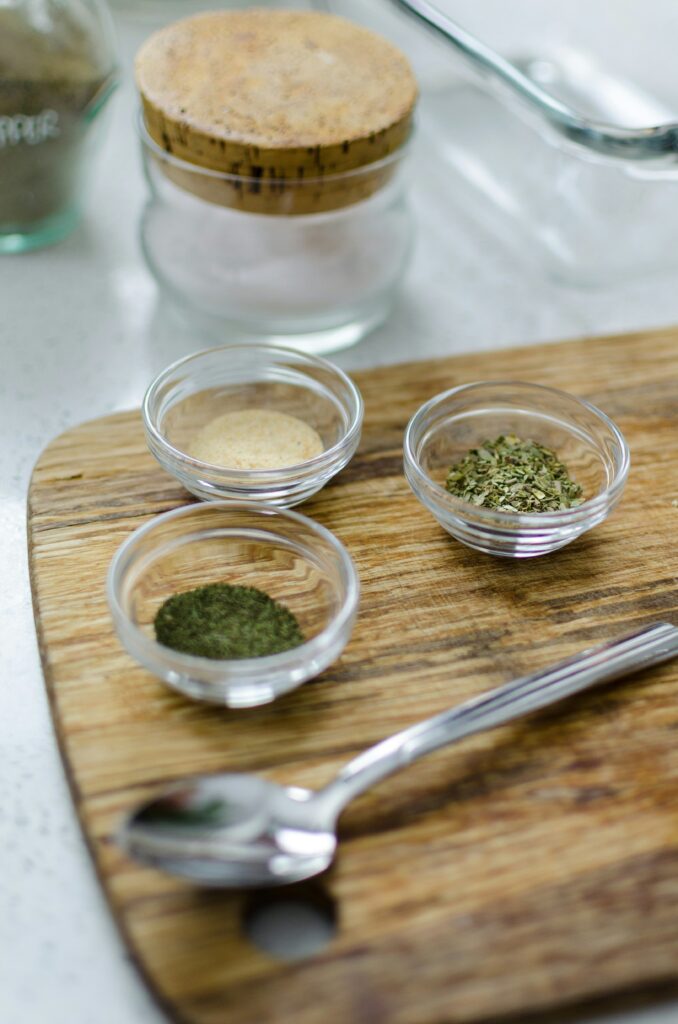Spices are one of the most versatile tools in the kitchen. Not only do they pack a punch of flavor, but many spices offer health benefits too. From adding a bit of cinnamon to warm up a winter dish to boosting metabolism with cayenne pepper, there’s a spice for every occasion! In this post, we’re diving into popular spices, exploring their unique benefits, and sharing some delicious recipes to inspire your next dish.

Disclosure: This post may contain affiliate links, meaning I earn a small commission if you make a purchase through one of my links—at no extra cost to you. As always, all opinions are my own. Thanks so much for your support! See my disclosure policy for more details.
Table of Contents
Why you’ll love cooking with spices
Spices add so much depth to cooking. They can transform a dish with their bold flavors, vivid colors, and even health perks. Here’s why incorporating a variety of spices in your kitchen is a game-changer:
- Boost Flavor – Elevate even the simplest of ingredients with a hint of spice, from a pinch of cinnamon in your coffee to a sprinkle of cayenne on roasted veggies.
- Health Benefits – Many spices are packed with antioxidants, anti-inflammatory compounds, and nutrients that support wellness.
- Versatile and Accessible – You can buy spices at your local grocery store or online and use them to tailor dishes to your taste.
Let’s dive into a few of my favorites, their benefits, and how to use them in my customizable recipes.

Cinnamon
A true kitchen staple! Did you know that this popular spice actually comes from the bark of a tree? Cinnamon originates from the inner bark of a Sri Lankan cinnamon tree known as Cinnamomum verum. Its distinct and aromatic flavor packs a punch, primarily due to cinnamaldehyde, the compound responsible for cinnamon’s strong flavor and smell.
Cinnamon health benefits
Research indicates that this powerful ingredient offers a number of health benefits. It’s rich in antioxidants, contains microbial properties, and can help regulate blood sugar levels.
Cinnamon recipes to try

Ginger
This pungent spice has been widely used for years and is believed to hold medicinal properties. Ginger’s roots trace back to Southeast Asia and have been part of traditional medicine for centuries. This spice can really tie a recipe together–it adds a delicious and vibrant zing that can elevate your meal to a whole new level.
Of course, you’ll find fresh ginger root at your local grocery store. Then, you can buy ground (dried) ginger at your local spice shop or online.
Ginger health benefits
Gingerol, a natural component found in ginger root, has been found to reduce inflammation and provide benefits for digestion and nausea. Studies suggest that ginger helps speed up our digestive processes and encourage efficient digestion.
Ginger may have some other potential benefits too such as soothing sore muscles and lowering blood sugar.
Ginger recipes to try
- Honey Soy Glazed Salmon
- Healthy Ramen Stir Fry
- Mixed Vegetable Curry With Coconut Milk
- Gingerbread in a Mug

Turmeric
When you first think of turmeric, you likely think of its vibrant hue and its growing reputation for health benefits. Its distinctive color comes from the chemical compound, curcumin. Originating in Southeast Asia and predominantly cultivated in India, turmeric has surged in popularity. Today, it’s a staple in traditional Indian curries and stews and has also found its way into modern favorites like lattes and breakfast scrambles.
Turmeric health benefits
Turmeric contains a compound called “curcumin,” known for its powerful anti-inflammatory and antioxidant effects. A 2022 study also highlights that “piperine,” the main active component in black pepper, can enhance the bioavailability of curcumin when the two are combined. So whenever you’re having turmeric, add a bit of fresh cracked black pepper with it!
Turmeric recipes to try

Cayenne
This fiery spice has been a kitchen staple for centuries, originating in Central and South America. Named after the city of Cayenne in French Guiana, it’s been used not only to heat up recipes but also for its medicinal properties. Cayenne pepper brings a bold kick to any dish, transforming even the simplest of meals into something that packs a punch.
Cayenne pepper owes its fiery heat to “capsaicin”, the compound that gives it its signature kick. This bold spice has become a favorite in kitchens around the world, bringing vibrant heat to everything from soups and stews to marinades and rubs.
Cayenne health benefits
Capsaicin, the active compound in cayenne pepper, has been studied for its anti-inflammatory, antioxidant, and metabolic benefits. Emerging research suggests that capsaicin may promote gut health by supporting the balance of beneficial bacteria and strengthening the intestinal barrier. These benefits may help prevent obesity, diabetes, and inflammatory diseases
Cayenne recipes to try

Rosemary
Known for its aromatic, pine-like fragrance, rosemary has been a kitchen staple for centuries, originating in the Mediterranean region. Named after the Latin phrase “dew of the sea,” rosemary was thought to bring good luck and was often used in celebrations and in cosmetics. Today it remains a kitchen essential, adding an earthy, woodsy note to dishes, turning simple ingredients into savory memorable meals.
From roasting to grilling, this herb pairs perfectly with everything from hearty veggies to meats, giving an elevated taste that’s both rustic and refreshing.

Rosemary health benefits
Rosemary is more than just an aromatic herb—it’s full of compounds that could support your well-being in a few key ways. Research shows that the antioxidants in rosemary, like carnosic and rosmarinic acids, work to protect your cells from daily wear and tear.
Plus, rosemary contains oleanolic acid, which has antiviral qualities, and other natural oils that may help ease inflammation.
Rosemary recipes to try
Oregano
Oregano is a beloved herb with deep roots in culinary history. Originating from the Mediterranean region, its name comes from the Greek words “oros” (mountain) and “ganos” (joy), beautifully capturing its natural habitat and uplifting aroma. Ancient Greeks admired oregano not just for its flavor but also for its symbolic association with happiness and joy, often using it in wedding ceremonies to bless the couple.
With its unique peppery flavor and aromatic fragrance, oregano has become a beloved staple not only in Italian and Greek cuisines, but in kitchens worldwide.

Oregano health benefits
Oregano is packed with antioxidants like thymol and rosmarinic acid, helping to combat oxidative stress and protect your cells. It also shows promising antimicrobial benefits, making it an ideal choice for natural food preservation as an alternative to synthetic additives. Its anti-inflammatory qualities even offer potential support for gut health.
Oregano recipes to try
Basil
Basil is a fragrant herb that thrives in warm climates, originating in the tropical regions of Asia and Africa. Revered for its culinary significance, basil has held a high status in various cultures, often associated with love and prosperity. Its rich, aromatic leaves have made it a favorite in kitchens around the world, particularly in Italian and Mediterranean cuisines.
If you have fresh basil, be sure to keep it stored at room temp, as putting it in the fridge will cause it to turn black.
You can buy fresh basil at your local grocery store. Then, you’ll find dried basil at your local spice shop or online.

Basil health benefits
Research shows that basil is a powerhouse of health benefits. It’s loaded with antioxidants, which help protect your cells from damage. Basil is also known for its antimicrobial properties, meaning it can help fight off infections caused by bacteria, viruses, and fungi.
Basil recipes to try

Commonly asked questions about spices
Do spices go bad?
Spices don’t necessarily spoil, but they can lose potency over time. Whole spices last longer than ground ones, often remaining fresh for 2-4 years when stored properly.
How should I store spices?
Keep spices in a cool, dark place, away from direct sunlight and heat sources. Airtight containers are ideal to maintain their flavor.
What’s the best way to grind whole spices?
Using a mortar and pestle or a spice grinder will give you the freshest, most flavorful results, releasing essential oils right before cooking. For example, I often toast whole cumin and coriander before grinding them to add to my lamb meatballs!


Where’s the best place to buy spices?
You can find spices at most grocery stores, but local spice shops often have fresher, more diverse selections. If you prefer convenience, you can purchase spices online as well. Here’s a few of my favorites found on Amazon:

What are other common spices?
Here’s some other spices that I didn’t mention in this post specifically, but make great additions to your kitchen!
- Star Anise – Licorice-flavored spice, popular in Asian cooking, soups, and teas.
- Cumin – Adds an earthy, warm flavor, commonly used in Mexican, Middle Eastern, and Indian dishes.
- Paprika – Comes in sweet, smoked, and hot varieties, ideal for adding color and subtle sweetness or heat to dishes.
- Nutmeg – Warm and slightly sweet, often used in baking, savory sauces, and fall dishes.
- Cloves – Strong, aromatic spice used in baked goods, curries, and beverages like mulled wine.
- Cardamom – Known for its citrusy, minty taste, popular in both sweet and savory dishes, especially in Indian and Middle Eastern cuisines.
- Fennel Seeds – Slightly sweet, with a licorice-like flavor; great for Italian sausages, stews, and baking.
- Coriander – Mild, lemony flavor; pairs well in curries, marinades, and soups.
- Bay Leaves – Adds subtle depth to soups, stews, and sauces when simmered.
- Black Pepper – Essential kitchen staple with a sharp, pungent taste, enhancing a wide range of dishes.
- Allspice – Warm and sweet, often used in baking, Caribbean dishes, and marinades.

Need more help with recipes for your busy schedule?
In my coaching + cooking program, I help busy people with beginner cooking knowledge become confident in the kitchen so that they can enjoy nourishing foods they love and stress less about mealtime. Click here to learn more about this virtual program led by a dietitian.
save this guide to cooking with spices on pinterest:









0 Comments